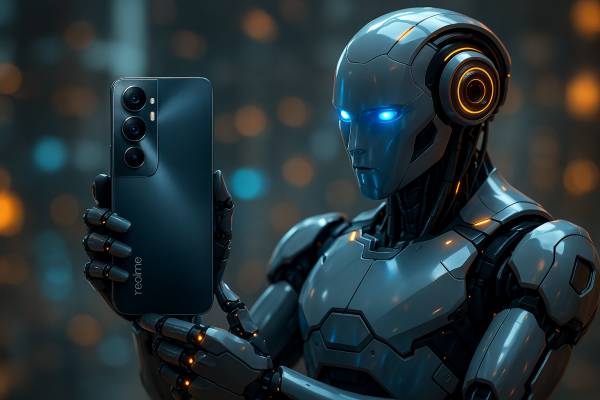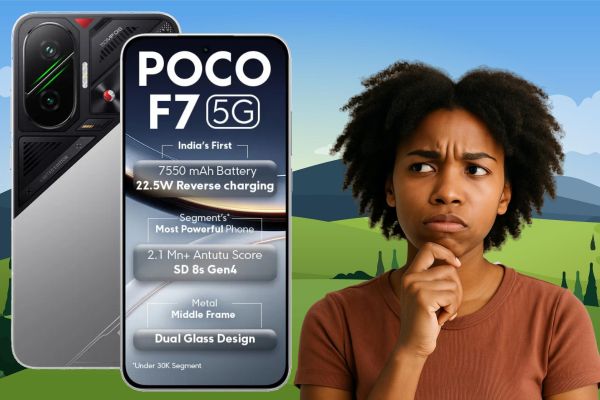The Xiaomi Redmi 14C aims to compete in the budget smartphone segment. On paper, it boasts impressive features like a 120 Hz display and a 50-megapixel camera, but the real question is: how does it perform in everyday use? In this article, we explore what both testers and everyday users have to say.
Design
The Redmi 14C makes a strong first impression. According to professional reviewers, the phone has a surprisingly refined look for its price range. The available colors—matte black, textured green, and the unique “starry blue”—are not only attractive but also distinctive. The plastic body is well-constructed, with tight seams and a solid feel that doesn't come across as cheap. The only downside noted by testers is the 211-gram weight, which makes it noticeably heavier than many competing models.
Customer reviews largely echo these observations. Many users describe the phone as “very stylish” or “elegant.” One German customer remarked, “It looks good, feels great in the hand, and doesn’t slip.” Others found the weight to be a drawback—one user put it simply: “Too heavy, especially for a woman’s handbag.” A French buyer praised the black version for not showing fingerprints. Overall, the design and materials impressed most customers, even though the device prioritizes practicality over lightness.
Display
One of the Redmi 14C’s standout features is its 120 Hz refresh rate—something rare in this price category. Testers confirm that this results in smoother scrolling and more fluid animations. The display measures 6.88 inches and uses IPS technology, but its resolution is only 1640x720 pixels. Reviewers described the screen as “slightly blurry,” particularly when displaying text. Brightness is average, making outdoor visibility under direct sunlight less than ideal. The display’s slow response time also makes it less suitable for gaming.
Users, however, often view the display differently. A German reviewer wrote, “The screen is surprisingly good—I wasn’t expecting that.” Others appreciated the large screen size, especially for reading or watching videos. The low resolution didn’t seem to bother most people, likely because image quality at this price point isn’t expected to be flawless. All in all, customers were satisfied—even if they didn’t evaluate the display with technical scrutiny.

Performance
When it comes to performance, the Redmi 14C falls short. Despite its name, the MediaTek Helio G81 Ultra processor is anything but “ultra.” In fact, it performs worse than the previous Redmi 13C model. Coupled with relatively slow eMMC storage, the result is frequent lag and long app load times, especially when multitasking.
Customer feedback clearly reflects these issues. Many identify sluggish performance as the phone’s biggest drawback. One user summed it up: “Nice design, but unusable. It's slow, laggy, and can’t handle multiple apps.” Another was so frustrated that they returned the phone: “It freezes doing even basic tasks—completely unacceptable.” Some users reported marginal improvements after disabling pre-installed apps, but this only addresses the symptoms, not the root problem.
Camera
On the back, the phone sports a 50-megapixel main camera that performs decently for its price. In good lighting, it captures fair detail and natural colors. Even under lower light, images remain recognizable—a notable plus. The 13-megapixel front camera is also acceptable, and video quality is decent, though reviewers criticized the slow autofocus. They also noted that the second rear lens seems purely decorative.
User reactions were mixed. Some were pleased: “Surprisingly good photos,” “Nice shots, especially during the day.” Others were less impressed: “Poor camera, blurry photos,” “I expected more from 50 megapixels.” One particularly honest user commented, “I liked the camera—but not the pictures.” This suggests that satisfaction with the camera heavily depends on expectations and lighting conditions.
Battery and Charging
One of the Redmi 14C’s biggest strengths is its 5160 mAh battery. According to tests, it can last up to two days with moderate use—an excellent result in this category. However, its 18-watt charging is relatively slow, taking more than two hours to fully recharge. A major downside is that the box does not include a charging adapter—it must be purchased separately.
Customers consistently praised the battery life: “It lasts a very long time,” “Easily gets me through two days,” “Great battery.” However, many were upset about the missing charger. One buyer wrote, “I couldn’t believe a phone came without a charger.” Another said, “Incomplete packaging—unacceptable.” While the battery won praise, the absence of a charger was a source of frustration.
Sound, Connectivity, and Software
On the software side, the Redmi 14C runs Xiaomi’s new HyperOS, based on Android 14. Testers found it well-optimized and easy to navigate. Xiaomi promises security updates until 2028—an impressive commitment at this price point. Other positives include the presence of NFC and a fingerprint sensor. However, the speaker was described as average, producing “flat” sound. Bluetooth connectivity is flexible, but 4G reception was reportedly problematic in several instances.
Customers also criticized the speaker, calling it “too quiet” or “poor quality.” One said, “It sounds like it’s coming from a plastic box.” Some experienced frequent Bluetooth disconnections: “The connection is unstable and drops often.” On the positive side, many users praised the software for its “easy-to-use, intuitive interface.”
Conclusion
At first glance, the Xiaomi Redmi 14C seems like a strong budget option—but its shortcomings quickly become apparent in everyday use. The design, high refresh rate, camera, and battery life are all commendable, and both testers and users generally agree on these strengths. However, its underpowered processor, sluggish performance, incomplete packaging, and unreliable connectivity may be deal-breakers for many.
The Redmi 14C may be suitable for users on a tight budget who only need basic functionality. But if you plan to run multiple apps, take frequent photos, or play games, it’s worth looking for a model that’s not just affordable and good-looking—but also fast and reliable.






















